Family : Pomacanthidae

Text © Giuseppe Mazza

English translation by Mario Beltramini
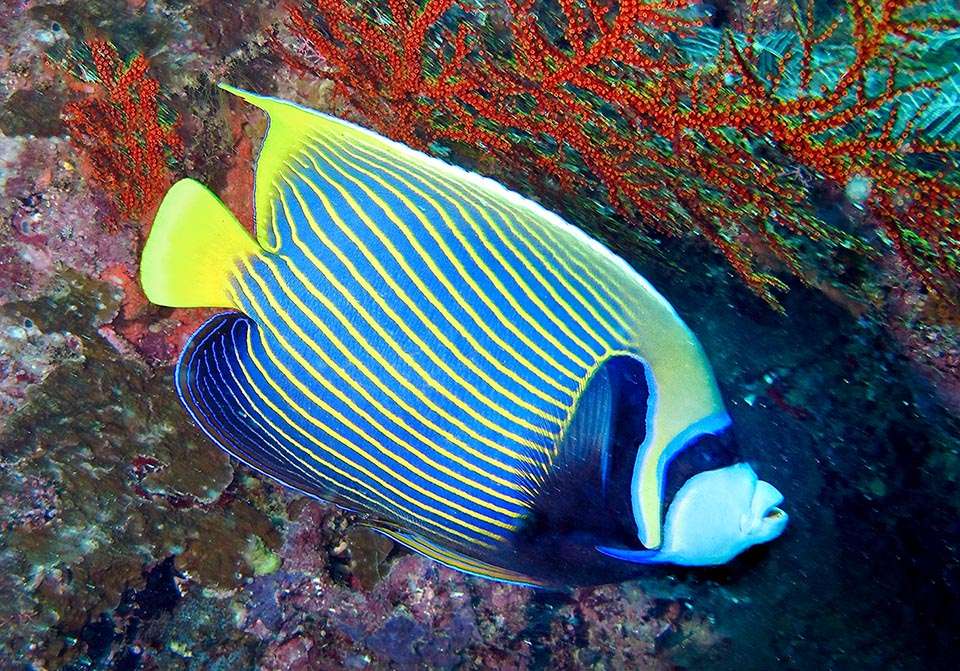
The Emperor angelfish (Pomacanthus imperator) frequents, up to 100 m of depth, the madreporic formations in the tropical Indo-Pacific © Bernard Dupont
The Pomacanthus imperator Bloch, 1787, commonly called Emperor angelfish, belongs to the class of Actinopterygii, the ray-finned fishes, to the order of Perciformes and to the colorful family of Pomacanthidae.
The name of the genus comes from the Greek “poma” = cover and “akantha” = spine, with reference to the spine on the preoperculum.
The name of the species “imperator” means in Latin emperor, with reference to its majestic appearance.
Zoogeography
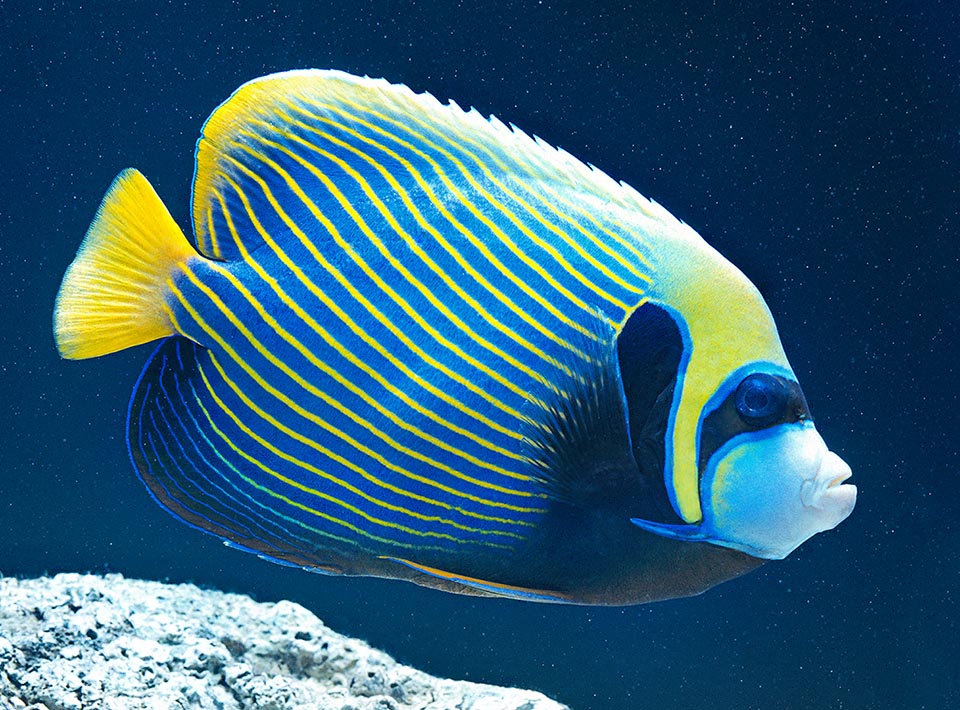
It may be 40 cm long and is easily recognized due to the thick yellow stripes on turquoise blue background cleaving the body © Giuseppe Mazza
It is at home in the tropical waters of the Indo-Pacific.
As an indication, we find it along the entire African coast from South Africa and Madagascar up to the Red Sea and the Arabic Sea, to the Seychelles, Mauritius, Réunion, Maldives, in India, Sri Lanka, Christmas Island, Thailand, Malaysia, Australia, Indonesia, Micronesia, New Guinea, New Caledonia, Philippines, Taiwan and China up to southern Japan. Eastward, it has colonized Kiribati, Samoa, Tonga and the Hawaii, but not the Marquesas Islands. Southward, it reaches the Lord Howe Island, but not Easter Island.
It has been introduced in Puerto Rico.
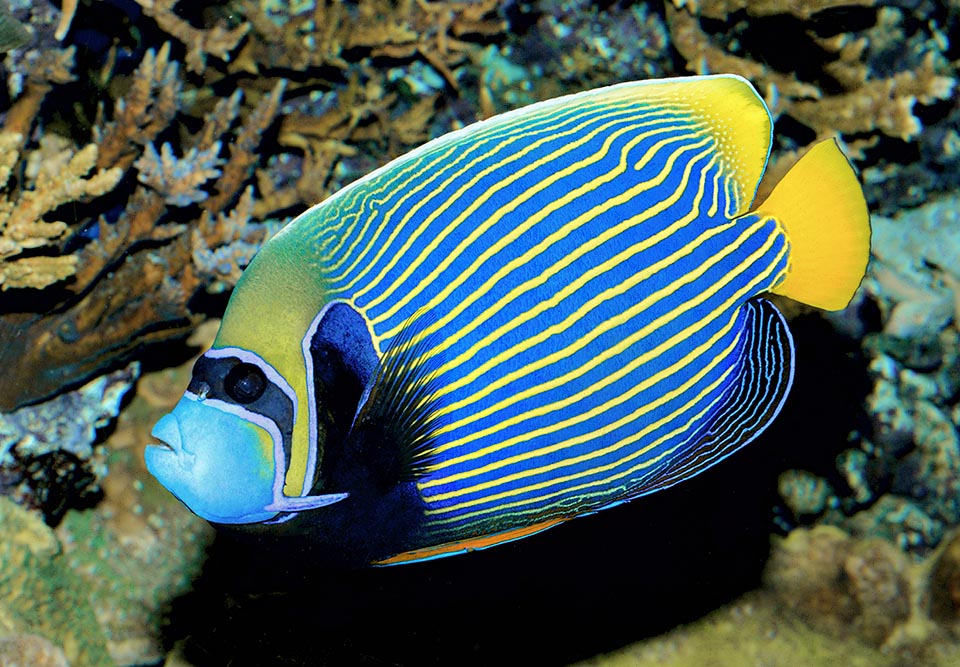
Stands out, close to the head, the showy preopercular spine typical to the angelfishes and the eyes are masked by a dark band © Giuseppe Mazza
Ecology-Habitat
It lives in the madreporic formations up to 100 m of depth.
Morpho-physiology
The Emperor angelfish can reach the 40 cm. The body is laterally compressed, more or less oval and higher than the congeners, with a showy spine at the base of the preoperculum as the scientific name indicates.
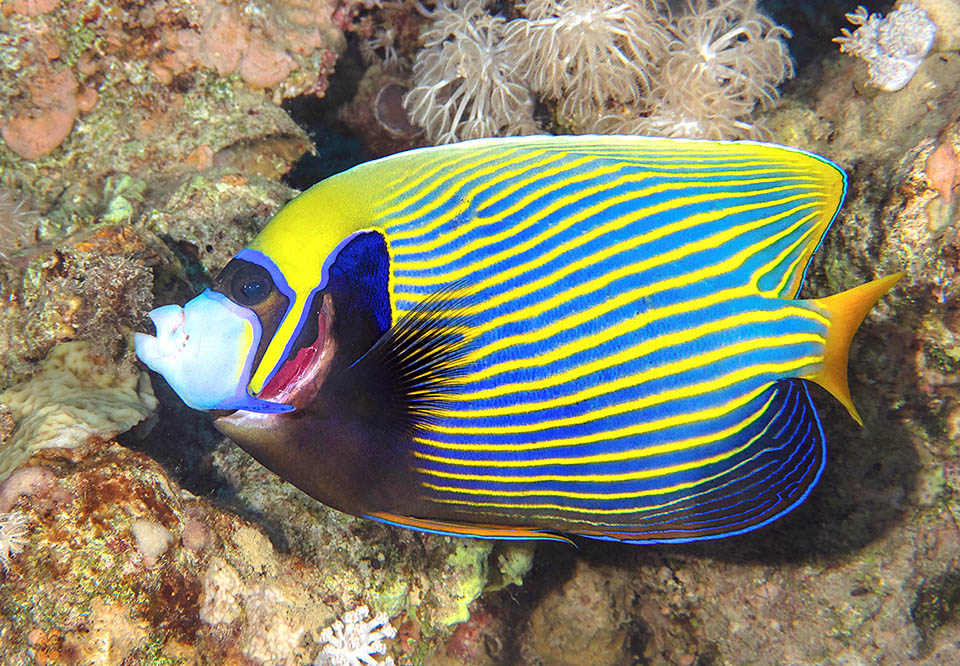
Pomacanthus imperator eats mainly sponges, ascidia and various benthic organisms, including seaweeds, that it cuts with its serrated teeth © Rafi Amar
The dorsal fin has 13-14 spiny rays and 17-21 soft; the anal has 3 spiny rays and 18-21 soft; the ventral and the pectoral ones are unarmed and the caudal is more or less rounded.
The snout is pale blue surrounded by a blue edge which prolongs on the preopercular spine and reappears on the head, after the dark band hiding the eye.
The front is yellow with greenish shades and the area close to the pectoral ones is dark blue, almost black like the low ventral part, surrounded by the usual blue edge.
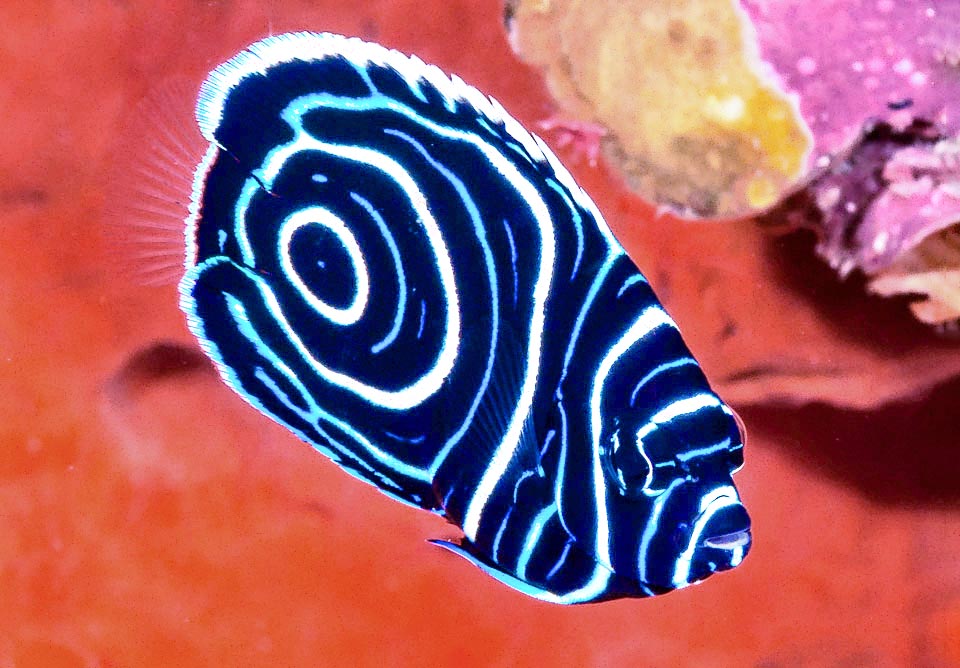
Juveniles have very different livery, with white and turquoise concentric drawings on blue background presenting various phases © François Libert
But the peculiar feature, which leaps to the eye, is formed by the numerous yellow stripes, on turquoise blue background, that cross the body.
The border of the dorsal and the caudal fins is yellow, whilst the anal fin shows some pale blue and reddish patterns on the dark background.
The juveniles do have a completely different livery. They are wholly blue, with clear patterns getting concentric towards the tail, and get progressively the look of the adults starting from the 10-12 cm.
Ethology-Reproductive Biology
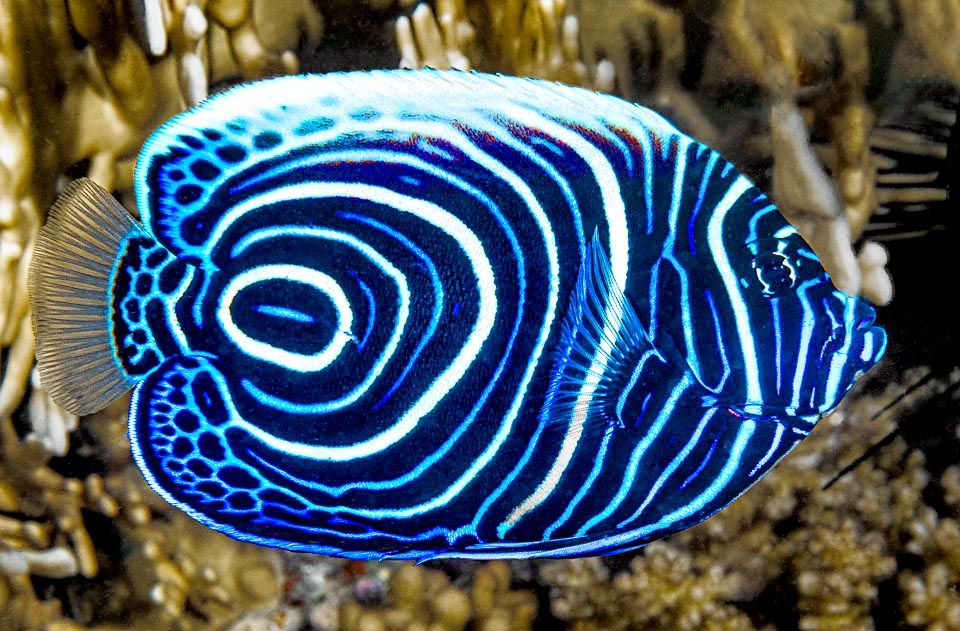
Growing up it enriches with mimetic spots on the dorsal spine, the anal and the first part of the caudal © François Libert
The juveniles live in small schools in the shallow waters of the more sheltered zones of the reefs, whilst the adults, solitary or paired, venture along the outer ridges. They nourish of sponges, ascidians, various benthic organisms and seaweeds they cut with their jagged teeth. They have been sometimes seen cleaning from the ectoparasites big fishes like the ocean sunfish. After the fecundation, the eggs are entrusted to the currents.
Pomacanthus imperator is very caught for the consumption and for the aquarium market, even if, considering its size, the species is suitable only for the large public aquaria. The fishing vulnerability index thus marks 68 on a scale of 100 and in addition the resilience of the species is very low because it is necessary at least 14 years for doubling the populations.
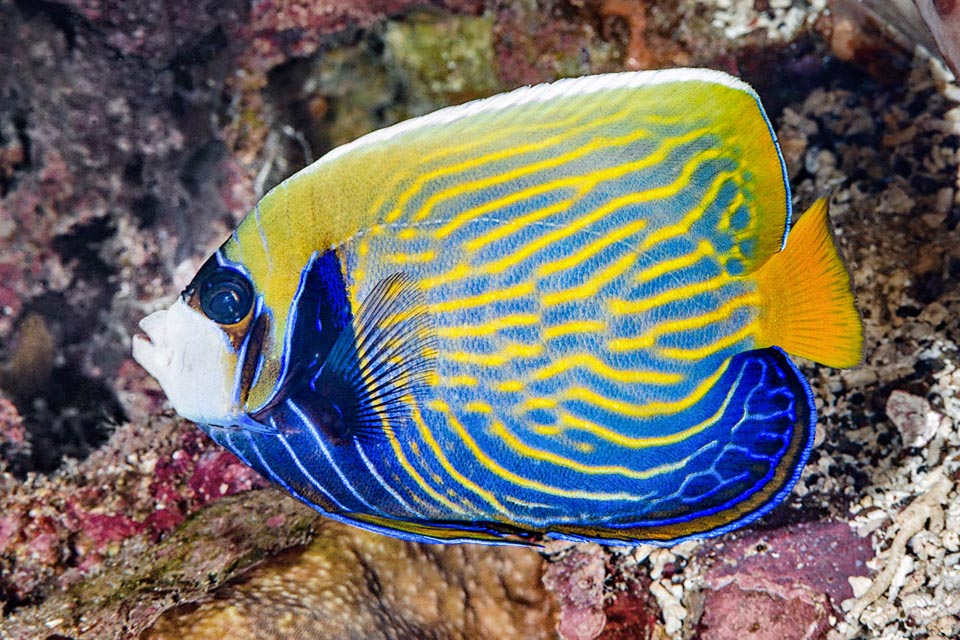
In the subadults the drawings break up to recompose, lining up, with the adults yellow shades © François Libert
Conversely, its diet, very varied, protects it against climate changes and thus it appears as “Least Concern” in the Red LIst.
Synonyms
Acanthochaetodon imperator Bloch, 1787; Acanthochaetodon nicobariensis Bloch & Schneider, 1801; Chaetodon imperator Bloch, 1787; Chaetodon nicobariensis Bloch & Schneider, 1801; Holacanthus imperator Bloch, 1787; Holacanthus nicobariensis Bloch & Schneider, 1801; Pomacanthodes imperator Bloch, 1787; Pomacanthus nicobariensis Bloch & Schneider, 1801.
→ For general information about FISH please click here.
→ For general information about BONY FISH please click here
→ For general information about CARTILAGINOUS FISH please click here.
→ To appreciate the BIODIVERSITY of BONY FISH please click here.
→ To appreciate the BIODIVERSITY of CARTILAGINOUS FISH please click here.
